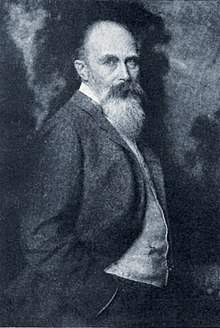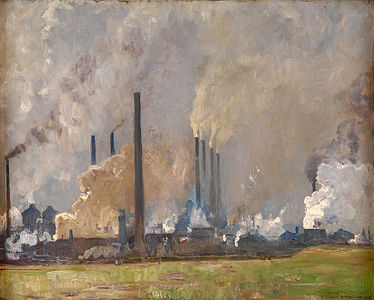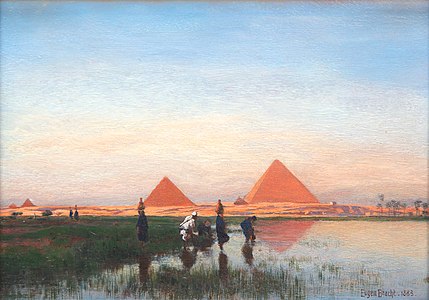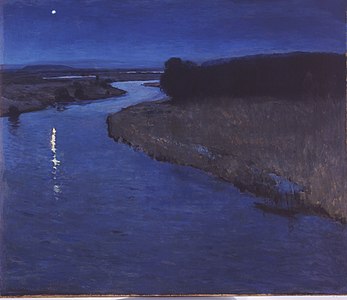You can help expand this article with text translated from the corresponding article in German. (September 2016) Click for important translation instructions.
|
| This article relies largely or entirely on a single source. Relevant discussion may be found on the talk page. Please help improve this article by introducing citations to additional sources. Find sources: "Eugen Bracht" – news · newspapers · books · scholar · JSTOR (March 2018) |
| Eugen Bracht | |
|---|---|
 Bracht – photo by Nicola Perscheid (1917) Bracht – photo by Nicola Perscheid (1917) | |
| Born | (1842-06-03)3 June 1842 Morges, Waadt, Switzerland |
| Died | 5 November 1921(1921-11-05) (aged 79) Darmstadt, Hesse, Germany |
| Resting place | Darmstadt, Hesse, Germany |
| Nationality | German |
| Alma mater | Academy of Fine Arts, Karlsruhe |
| Known for | Painting |
| Movement | Romanticism, Symbolism, Impressionism |
Eugen Felix Prosper Bracht (3 June 1842 – 5 November 1921) was a German landscape painter.
Biography
Bracht was born in Morges, Waadt (near Lake Geneva in Switzerland) of German parents. His family later moved to Darmstadt, Germany, where he became a pupil of Karl Ludwig Seeger at the Academy of Fine Arts, Karlsruhe and later studied under Hans Gude in Düsseldorf. Dissatisfied with his work, he moved to Berlin in 1864 and became a merchant, but in 1876 he renewed his interest in painting and joined his former teacher Seeger in Karlsruhe.
A late Romanticist painter, Bracht was known for his moody landscapes and coastal scenes in North Germany, and began a sketching trip through Syria, Palestine and Egypt from 1880 to 1881. In 1882, he became a Professor of Landscape Painting at the Prussian Academy of Arts.
In 1885, he painted the Battle of Chattanooga for the "Philadelphia Panorama Company", a cyclorama which was installed in Philadelphia and Kansas City.
Bracht was supported by Anton von Werner, the conservative director of the Berlin Academy, but cut ties with him during the affair of the closure of Edvard Munch's Berlin exhibition in 1892.
Despite the hostility, when von Werner died, Bracht finished the late painter's panorama of the Battle of Sedan.
Later, Bracht became a representative of German Impressionism.
In 1901, he obtained a teaching position at the Dresden Academy of Fine Arts that he held until 1919. He retired to Darmstadt, where he died in 1921.
Selected paintings
-
 Hoesch Steelworks (1905)
Hoesch Steelworks (1905)
-
 Memories of Giza (1883)
Memories of Giza (1883)
-
 Morning Star (1889)
Morning Star (1889)
-
 The Shore of Oblivion (1911)
The Shore of Oblivion (1911)
-
 Coast of Sylt (Morsum-Kliff) (1897)
Coast of Sylt (Morsum-Kliff) (1897)
-
 Hoesch Steelwoorks (1907)
Hoesch Steelwoorks (1907)
-
 Neu Zittau (1884)
Neu Zittau (1884)
-
 Rest in the Syrian Desert (1883)
Rest in the Syrian Desert (1883)
See also
Notes
- Sotheby's: The Orientalist Sale 2012
External links
[REDACTED] Media related to Eugen Bracht at Wikimedia Commons
Categories:- 1842 births
- 1921 deaths
- 19th-century German painters
- 19th-century German male artists
- 20th-century German painters
- 20th-century German male artists
- German Impressionist painters
- German male painters
- German Symbolist painters
- German Orientalist painters
- People from Morges
- Academic staff of the Dresden Academy of Fine Arts